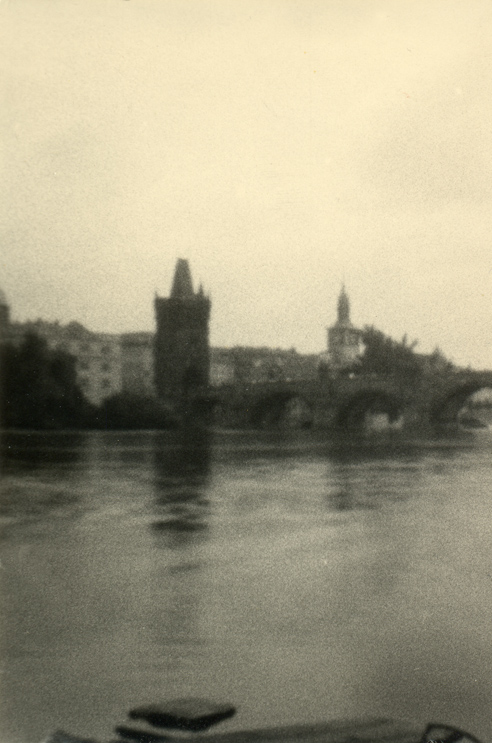jbielikowski
Jan Bielikowski
yesterday I've hacked old Mamiya back with some balsa wood and loads of gaffer tape. Everything is fine exept hole is bit too big, about 0.8mm. Here it is what it produce. Damn I'm preety happy with the results.






yesterday I've hacked old Mamiya back with some balsa wood and loads of gaffer tape. Everything is fine exept hole is bit too big, about 0.8mm. Here it is what it produce. Damn I'm preety happy with the results.

focal length was about 55mm, negative is 6x7.
I've used it for calculating exposure. It was too late for hole size, and I wasnt able to make smaller (should be around 0.3mm).

guys, your photos are far much better than mine, now I found smaller pin and made new "lens". I dont want to buy laser made holes, cause they are not DIY 😉 but one day I'll buy nice wooden pinhole camera. now I have problem how to attach tripod mount film back with gaffer tape.

Janis, that is a really good 35mm pinhole. I think I'd make another complete one, and not tear this one down.
guys, your photos are far much better than mine, now I found smaller pin and made new "lens". I dont want to buy laser made holes, cause they are not DIY but one day I'll buy nice wooden pinhole camera.

Elektrojänis, your method looks good, lack of dremel wont be big problem thou.


Hi jbielikowski,
Nothing wrong with your images! Nice subject matter, too. But if you are seeking sharper images, you may be interested in my pinhole making technique.
I use the "dimple and sand" method to hand-make my pinholes. 0.15 - 0.5mm should be no problem. (and 0.4mm will be optimum for your 55mm focal length).
After barely piercing a hole through your aluminum with your smallest needle, turn the piece over and sand the "bump-side" with very fine sandpaper. Go slow and use a scanner to measure the hole.
Sanding down the bump also ensures that the pinhole is round and free of burrs. This equates to sharper images. I also like using brass shims, 0.02" thickness from my hobby shop.
An expanded explanation is on my Flickr site. Click on the pinhole below:
Best of luck!
rt 😎


Are you missing a zero on your shim stock size, or am I adding one to mine? ;-)
I thought I was using .002".
Regards, John
Thanks, John for catching that! Mine is a typo. I really do use .002" shims.
Great image, by the way, John. It has a nice vintage look. And Fidget, those are really nice medium-format exposures. I do esp. like the first one with the single old gnarly tree and interesting stones (gravestones?),
rt 😎

